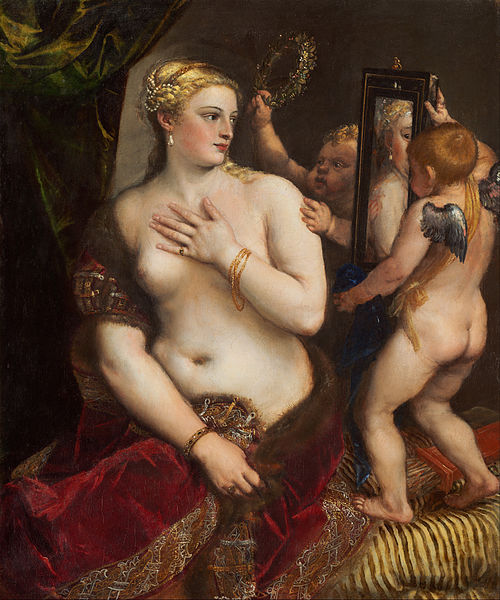
In superstition and folklore, all mirrors are magical. They can be mirrors of water, metal, stone, or glass. Any reflective surface is a mirror. It can repel evil, bring good fortune, and protect a person from certain death. Mirrors have long been the focal point in numerous myths and stories throughout human history, and they continue to gain power in both fantasy and science fiction novels.

Vulcan’s Mirror
There were numerous magical mirrors in ancient mythology. Perhaps one of the least known of these was a mirror made by Vulcan (Hephaestus). Vulcan was the Roman god of the fire. He was master of the forge and metalworking. In myth he forged a magical mirror that could show him the past, present, and future.
Unfortunately, Vulcan had also made a magic mirror for Venus, his wife and goddess of love. Her magic mirror gave her the ability to cheat on Vulcan with Mars and helped prevent them from getting caught in the act. [SOURCES 1, 2]
Medusa’s Image
Perseus, one of the most well known Greek heroes of all time, was sent to fetch the head of Medusa. She was a frightening gorgon who could turn a man into stone if he looked upon her face.
Perseus carried with him a sword and a shield that also acted as a mirror. To defeat the dangerous Medusa, he used the reflection of Medusa in his shield to cut off her head and present it to King Polydectes.
In this myth, the mirror was an agent of protection and it is believed it was used to “fascinate” Medusa with her own reflection. Some accounts say her reflection turned her into stone just as Perseus cut through her neck. [SOURCES 3, 4]
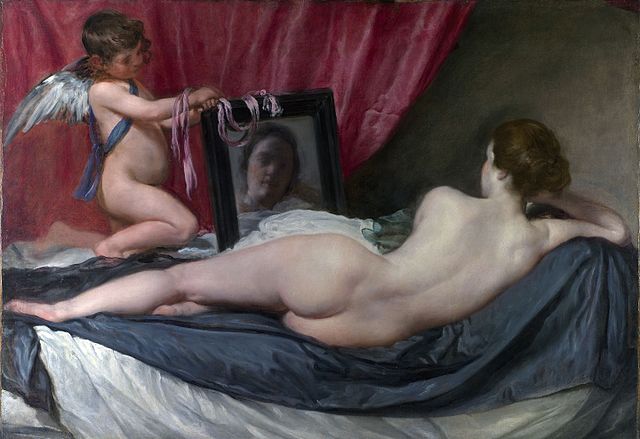
Lord Of The Smoking Mirror
The Aztecs made mirrors out of obsidian, a shiny black stone. Within their mythology was the god Tezcatlipoca who was also known as the Lord of the Smoking Mirror. This ancient deity was depicted as wearing a black mirror on his chest or headdress to symbolize this authority.
He was a god of communication and his people could commune with him by gazing into an obsidian mirror. In turn, he had his eye on their world through his magical obsidian mirror and was known to punish wrongdoers who would gaze into one of his mirrors among the people. [SOURCE 5]
Merlin’s Mirror
The wizard of Arthurian legend had a magic mirror of his own although it was written that Merlin could use any reflective surface as a tool for scrying. Seeing into the future, Merlin’s mirror was used to protect Arthur’s kingdom. It would alert Merlin to any secret plots against the kingdom and it would show the faces of those who would commit treason against King Arthur.
Science fiction writer Andre Norton took the myth of the mirror and wove it into a science fiction Arthurian tale called Merlin’s Mirror in 1975. In her story, the mirror is an alien device and not a bowl of water or shined metal. [SOURCES 6, 7]
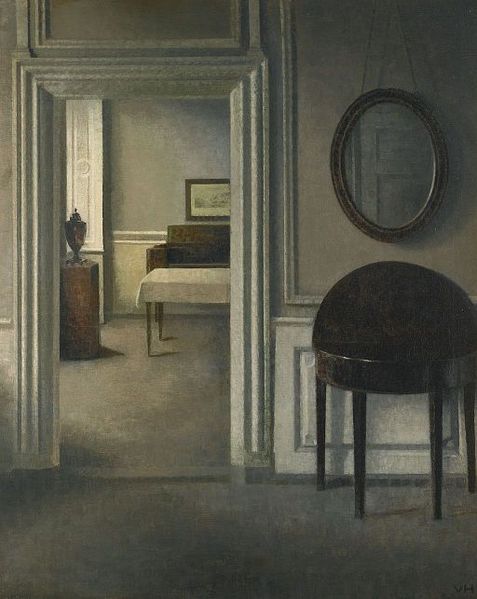
Mirror of Cambuscan
Imagine being able to tell if your best friend was true to you or if some disaster was on the way. Chaucer’s Canterbury Tales gave the world of literature the mirror of Cambuscan. The mirror was a gift from king of Araby and Ind to the king of Tartary and it showed the looker who was friend or foe. It also foretold of any forthcoming misfortunes and it could reveal signs of treason.
Other gifts were given along with the magical mirror, including a ring that would allow the wearer to understand the language of birds and plants and a sword that could penetrate any armor. [SOURCES 8, 9]
Mirror, Mirror On The Wall
In the Brothers Grimm tale of Snow White, we have a well known magic looking glass. As the story goes, Snow White was born to a beautiful queen who died in childbirth. Snow White’s father, the king, took a new wife who was also beautiful, but cold. This cold hearted queen would gaze into her magic mirror and ask it who was the “fairest of all.” The mirror would always answer that the queen herself was fairest of all the land.
But as Snow White grew into a young woman, her beauty surpassed the queen’s until one day the mirror told the queen that she was no longer the fairest. Snow White had become incredibly beautiful. The aging queen grew envious and devised a plan to get rid of Snow White. [SOURCE 10]
Galadriel’s Mirror
In The Fellowship of the Rings, Galadriel used a silver basin filled with water from a nearby stream as a scrying mirror. It could show a person “things that were, and things that are, and some things that yet may be. But which it is that he sees even the wisest cannot tell.” Both Sam and Frodo take the opportunity to look into the mirror, but they are both warned not to attempt to interpret the visions because of the danger involved. [SOURCES 11, 12]
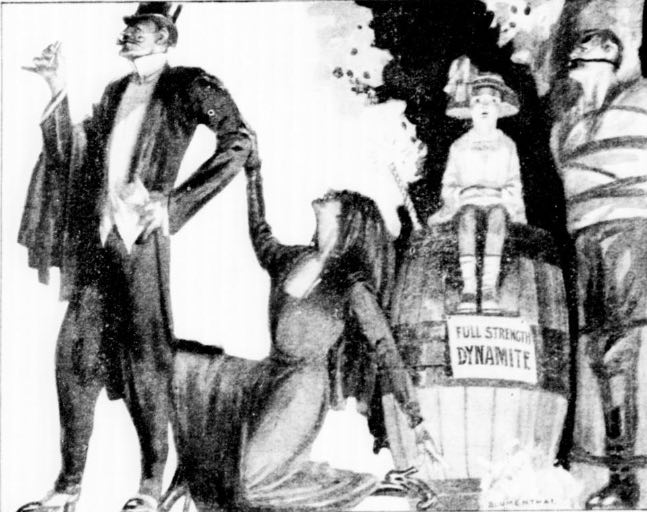
Dracula
Mirrors and death have long been intertwined with people covering mirrors after a death to prevent the soul of the deceased from becoming trapped. In the Bram Stoker’s Dracula, Stoker invented the superstition that vampires, the undead, cast no reflection.
In the novel, Count Dracula despises mirrors and, upon his visit, Jonathan Harker can find no mirror in Dracula’s castle. Fortunately for Harker, he brought his own mirror for shaving and discovers that Dracula casts no reflection. Dracula, in anger, throws Harker’s mirror out the window.
It was at this moment that Harker realized that there was something dark and evil about Dracula and that he would probably never escape the castle. [SOURCE 13]
Through The Looking Glass
Lewis Carroll published Through the Looking Glass as a sequel to Alice’s Adventures in Wonderland. In this wonder-filled novel, Alice created a world where everything is backwards. To get there, she had to step through a mirror and onto its other side.
In this mirror world, things are the same and different. There are no straight, logical paths, and events happen backwards. Instead of there being a cause and effect, in the looking glass world, the outcome happens first and then the cause.
At the end of the story, Alice wakes up to find that she has dreamed up the whole thing. [SOURCE 14]
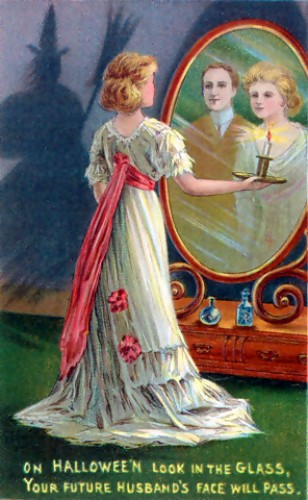
Mirror of Erised
In J.K. Rowling’s Harry Potter and the Sorcerer’s Stone, Harry Potter discovers the Mirror of Erised. In keeping with magical mirror tradition, this particular mirror had the power to show the viewer exactly what he desired more than anything else in the world. In it, Harry saw his loving parents alive and by his side.
Harry is drawn to the mirror and wants to live in the world it shows him, but Dumbledore discovers Harry gazing into the mirror and warns Harry of the dangers of the mirror. Harry’s life could pass him by as he looks longingly into the wishful scene of his parents. Instead of falling into the trap of desire, Dumbledore tells Harry not to visit the mirror again. [SOURCE 15]

